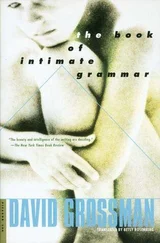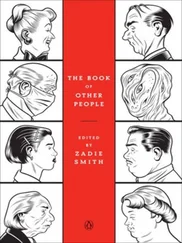MAO TSE TUNG (1893–1973)
In 1918 he worked as an assistant to the chief librarian of the University of Beijing. Overlooked for advancement, he decided to get ahead in another field and eventually became chairman of the Chinese Communist party.
J. EDGAR HOOVER (1895–1972)
His first job as a young man was that of messenger and cataloguer in the Library of Congress.
JORGE LUIS BORGES (1899–1986)
After his father’s death in 1938, Borges (who later became Argentina’s most famous author) started his first regular job, as an assistant in a small municipal library in Buenos Aires. In 1946, he was fired for signing an anti-Peron manifesto. After Juan Peron was overthrown in 1955, Borges was named director of the National Library of Argentina.
PHILIP LARKIN (1922–85)
The English poet, author of The Whitsun Weddings (1964) and High Windows (1974) spent his entire working life as a university librarian, at the University of Leicester (1946–50), Queen’s University, Belfast (1950–55) and at the Brynmor Jones Library in the University of Hull (1955–85).
JOHN BRAINE (1922–86)
British author of Room at the Top (1957), Braine worked as assistant librarian at Bingley Public Library (1940–51), branch librarian at Northumberland Country Library (1954–56) and branch librarian at West Riding of Yorks Country Library (1956–57).
– S.S. & C.F.
15 FAMOUS PEOPLE WHO WORKED IN BED
KING LOUIS XI (1423–83)
This French King was ugly, fat and sickly but also ruthless and clever, earning the title of the ‘universal spider’. He introduced the custom of the lit de justice (‘bed of justice’), a ceremonial appearance of the monarch, in bed, before le parlement with the princes of the realm on stools, the greater officials standing, and the lesser ones kneeling. No one is sure exactly why he began the practice, but it caught on and lasted until the French Revolution. Fontenelle, a critic of Louis XV, was asked on the eve of the Revolution, ‘What, sir, is a “bed of justice”?’ He replied, ‘It is the place where justice lies asleep.’
LEONARDO DA VINCI (1452–1519)
Leonardo earned a unique fame as an artist and scientist, and according to his Notebooks , he spent some time each night ‘in bed in the dark to go over again in the imagination the main outlines of the form previously studied… it is useful in fixing things in the memory’.
CARDINAL DE RICHELIEU (1585–1642)
In the last year of his life, the diabolically clever and scheming cardinal took to his bed and stayed there because of his rapidly deteriorating health. This did not prevent him from working — he directed his highly efficient secret police in exposing the treasonous machinations of the youthful royal favourite Cinq-Mars. Nor did it hinder the peripatetic cardinal from travelling — his servants carried him about in his bed, and if the door of the house he wanted to stay in was too narrow, they would break open the walls.
THOMAS HOBBES (1588–1679)
Hobbes, the great British political philosopher, was renowned for his mathematical approach to natural philosophy and found bed a comfortable and handy place to work on his formulas. He wrote the numbers on the sheets and, when he ran out of room, on his thighs. He wrote his 1661 Dialogue on Physics or On the Nature of Air entirely in bed. Hobbes also sang in bed because (according to Aubrey’s Brief Lives ) ‘he did believe it did his lungs good, and conduced much to prolong his life’.
HENRY WADSWORTH LONGFELLOW (1807–82)
Throughout his life Longfellow suffered from periodic bouts of severe insomnia. Out of desperation he decided to put his sleepless nights to some good use, and he began to write poetry in bed — including his 1842 classic ‘The Wreck of the Hesperus’.
MARK TWAIN (1835–1910)
Twain loved the luxurious comfort of writing in bed and there composed large portions of Huckleberry Finn, The Adventures of Tom Sawyer and A Connecticut Yankee in King Arthur’s Court . He seems to have been the first person to point out that working in bed must be a very dangerous occupation, since so many deaths occur there.
IGNACE FANTIN-LATOUR (1836–1904)
Best known for his portrait groups, especially Homage á Delacroix , this French painter worked in bed out of necessity when he could not afford wood for a fire. William Gaunt, in The Aesthetic Adventure , describes him propped up in bed, ‘Shivering, mournful, persistent… in a threadbare overcoat, a top hat over his eyes and a scarf round his mouth, balancing a candle on the edge of his drawing board and sketching with numbed, gloved hand.’
ROBERT LOUIS STEVENSON (1850–94)
For years Stevenson was wracked by coughing spells caused by tuberculosis, and consequently he wrote most of Kidnapped and A Child’s Garden of Verses in bed at his home in Bournemouth, England. Bed sometimes brought him inspiration in the form of dreams. One night his subconscious mind spun ‘a fine bogey tale’, as he called it, based on a real-life criminal he had read about. Stevenson’s dream became Dr Jekyll and Mr Hyde .
EDITH WHARTON (1862–1937)
Pulitzer Prize-winning author ( Age of Innocence , 1920) Edith Wharton wrote primarily about the upper class into which she was born. Her perspective on the good life was no doubt sharpened by her works habits — she wrote in the mornings, finding inspiration in the comfort of her bed. So accustomed was she to this routine that she once suffered a fit of hysterics because her hotel room bed did not face the light, so she could work.
MARCEL PROUST (1871–1922)
Bundled in sweaters, a hot-water bottle at his feet, the French author worked to refine his series of novels called A la Recherche du Temps Perdu (‘Remembrance of Things Past’) while lying virtually flat in bed in a cork-lined room. He had all the necessities within arm’s reach — more than a dozen pens (if he dropped one, he refused to pick it up because of dust), all of his notes, notebooks and manuscripts; even fumigation powder, which he believed helped his asthma. In spite of all his precautions, he died of pneumonia at the age of 51.
WINSTON CHURCHILL (1874–1965)
Churchill loved to lie abed in comfort while dictating letters and going through the boxes of official state papers for several hours each morning. Although he much preferred to write his books while standing up, declining health in his later years forced him to write and correct most of The Second World War and History of the English Speaking Peoples in bed.
MAE WEST (1892–1980)
The legendary sex queen with the hourglass figure was famous for her double-entendre lines. She wrote several of her own screenplays, including Diamond Lil , and in 1959 she published her autobiography, Goodness Had Nothing to Do With It . She did all her writing in bed, she reported, noting that ‘Everybody knows I do my best work in bed.’
MAMIE EISENHOWER (1896–1979)
While in the White House, First Lady Mamie Eisenhower did away with an office but not with the office routine. She held bedside conferences, dictated to her secretary, paid the bills and signed letters while ensconced in her pink-ruffled bed.
F. SCOTT FITZGERALD (1896–1940)
During the last two years of his life, while writing The Last Tycoon , Fitzgerald found that he could work longer hours by staying in bed. He’d retire to bed with a dozen Coca-Colas (which had replaced alcohol in his drinking habits), prop himself up on pillows, and using a lapboard, he’d work for about five hours a day. A fatal heart attack prevented him from completing The Last Tycoon .
Читать дальше












